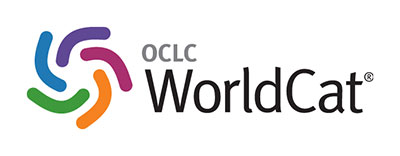The Effect of Turmeric and Mangosteen Peel Extract on PPARα Gene Expression in the Retina of HFD-Induced Rat Model
DOI:
https://doi.org/10.28932/jmh.v5i2.6684Keywords:
retina, HFD, metabolic dysfunctionAbstract
A long-term high-fat diet (HFD) was proven to induce metabolic dysfunction and causes various organ inflammation, including the retina. As the regulator of lipid metabolism, PPARa plays a role in retinal lipid metabolism and served as one of the targets for decreasing lipid deposition in the retina. Turmeric and mangosteen peel are Indonesian medicinal herbs with enormous health effects, including antiinflammation and hypolipidemic properties. This study aims to determine the effect of ethanol extract from turmeric and mangosteen peel on PPARa gene expression in the retina of an HFD-induced rat model. Twenty male Wistar rats were divided into 5 groups: negative control, positive control, turmeric, mangosteen, and fibrate. At the end of the study, total cholesterol and triglyceride levels from the blood were measured. The retina was extracted to conduct Realtime PCR for PPARα gene expression. The result showed a significant difference in triglyceride levels between positive control and turmeric groups, and PPARa gene expression in the retina between the control negative, positive, and turmeric groups, but no significant difference was found in other groups. This study concludes that the extract of turmeric increases the expression of the PPARa gene expression in the retina in an HFD-induced rat model.Downloads
References
Lin X, Li H. Obesity: Epidemiology, Pathophysiology, and Therapeutics. Front Endocrinol (Lausanne). 2021;12:706978.
Ayuningtyas D, Kusuma D, Amir V, Tjandrarini DH, Andarwati P. Disparities in Obesity Rates among Adults: Analysis of 514 Districts in Indonesia. Nutrients. 2022;14(16).
Apovian CM. Obesity: definition, comorbidities, causes, and burden. Am J Manag Care. 2016;22(7 Suppl):s176-85.
Kusuma D, Kusumawardani N, Ahsan A, K Sebayang S, Amir V, Ng N. On the verge of a chronic disease epidemic: comprehensive policies and actions are needed in Indonesia. Int Health. 2019;11(6):422–4.
De Lorenzo A, Gratteri S, Gualtieri P, Cammarano A, Bertucci P, Di Renzo L. Why primary obesity is a disease? J Transl Med. 2019;17(1):169.
Klop B, Elte JWF, Cabezas MC. Dyslipidemia in obesity: mechanisms and potential targets. Nutrients. 2013;5(4):1218–40.
Chen Y, Coorey NJ, Zhang M, Zeng S, Madigan MC, Zhang X, et al. Metabolism Dysregulation in Retinal Diseases and Related Therapies. Antioxidants (Basel, Switzerland). 2022;11(5).
Fu Z, Chen CT, Cagnone G, Heckel E, Sun Y, Cakir B, et al. Dyslipidemia in retinal metabolic disorders. EMBO Mol Med. 2019;11(10):e10473.
Dominguez-Avila JA, Gonzalez-Aguilar GA, Alvarez-Parrilla E, de la Rosa LA. Modulation of PPAR Expression and Activity in Response to Polyphenolic Compounds in High Fat Diets. Int J Mol Sci. 2016;17(7).
Grygiel-Gorniak B. Peroxisome proliferator-activated receptors and their ligands: nutritional and clinical implications--a review. Nutr J. 2014;13:17.
Escandon P, Vasini B, Whelchel AE, Nicholas SE, Matlock HG, Ma J-X, et al. The role of peroxisome proliferator-activated receptors in healthy and diseased eyes. Exp Eye Res. 2021;208:108617.
Pearsall EA, Cheng R, Zhou K, Takahashi Y, Matlock HG, Vadvalkar SS, et al. PPAR Alpha is essential for retinal lipid metabolism and neuronal survival. BMC Biol. 2017;15(1):113.
Korbecki J, Bobinski R, Dutka M. Self-regulation of the inflammatory response by peroxisome proliferator-activated receptors. Inflamm Res Off J Eur Histamine Res Soc . [et al]. 2019;68(6):443–58.
Kim JH, Kim O-K, Yoon H-G, Park J, You Y, Kim K, et al. Anti-obesity effect of extract from fermented Curcuma longa L. through regulation of adipogenesis and lipolysis pathway in high-fat diet-induced obese rats. Food Nutr Res. 2016;60:30428:1-9.
Muhamad Adyab NS, Rahmat A, Abdul Kadir NAA, Jaafar H, Shukri R, Ramli NS. Mangosteen (Garcinia mangostana) flesh supplementation attenuates biochemical and morphological changes in the liver and kidney of high fat diet-induced obese rats. BMC Complement Altern Med. 2019;19(1):1–10.
Sharifi-Rad J, Rayess Y El, Rizk AA, Sadaka C, Zgheib R, Zam W, et al. Turmeric and Its Major Compound Curcumin on Health: Bioactive Effects and Safety Profiles for Food, Pharmaceutical, Biotechnological and Medicinal Applications. Front Pharmacol. 2020;11:1021.
Arozal W, Louisa M, Soetikno V. Selected Indonesian Medicinal Plants for the Management of Metabolic Syndrome: Molecular Basis and Recent Studies. Front Cardiovasc Med. 2020;7:82:1-16.
Platania CBM, Fidilio A, Lazzara F, Piazza C, Geraci F, Giurdanella G, et al. Retinal Protection and Distribution of Curcumin in Vitro and in Vivo. Front Pharmacol. 2018;9:670:1-10.
Cai Y, Li W, Tu H, Chen N, Zhong Z, Yan P, et al. Curcumolide reduces diabetic retinal vascular leukostasis and leakage partly via inhibition of the p38MAPK/NF-K B signaling. Bioorg Med Chem Lett [Internet]. 2017;27(8):1835–9. Available from: https://www.sciencedirect.com/science/article/pii/S0960894X17301774
Fang Y, Su T, Qiu X, Mao P, Xu Y, Hu Z, et al. Protective effect of alpha-mangostin against oxidative stress induced-retinal cell death. Sci Rep. 2016;6:21018.
Golzarand M, Omidian M, Toolabi K. Effect of Garcinia cambogia supplement on obesity indices: A systematic review and dose-response meta-analysis. Complement Ther Med. 2020;52:102451.
Dehzad MJ, Ghalandari H, Nouri M, Askarpour M. Effects of curcumin/turmeric supplementation on obesity indices and adipokines in adults: A grade-assessed systematic review and dose-response meta-analysis of randomized controlled trials. Phytother Res. 2023;37(4):1703–28.
Amin F, Islam N, Anila N, Gilani AH. Clinical efficacy of the co-administration of Turmeric and Black seeds (Kalongi) in metabolic syndrome - a double blind randomized controlled trial - TAK-MetS trial. Complement Ther Med. 2015;23(2):165–74.
Vasques CAR, Schneider R, Klein-Júnior LC, Falavigna A, Piazza I, Rossetto S. Hypolipemic effect of Garcinia cambogia in obese women. Phytother Res. 2014;28(6):887–91.
Nair AB, Jacob S. A simple practice guide for dose conversion between animals and human. J basic Clin Pharm. 2016;7(2):27–31.
Lee H-Y, Kim S-W, Lee G-H, Choi M-K, Jung H-W, Kim Y-J, et al. Turmeric extract and its active compound, curcumin, protect against chronic CCl4-induced liver damage by enhancing antioxidation. BMC Complement Altern Med. 2016;16(1):316.
Saito M, Ueno M, Ogino S, Kubo K, Nagata J, Takeuchi M. High dose of Garcinia cambogia is effective in suppressing fat accumulation in developing male Zucker obese rats, but highly toxic to the testis. Food Chem Toxicol an Int J Publ Br Ind Biol Res Assoc. 2005;43(3):411–9.
Ngah NF, Muhamad NA, Abdul Aziz RA, Mohamed SO, Ahmad Tarmizi NA, Adnan A, et al. Fenofibrate for the prevention of progression of non-proliferative diabetic retinopathy: review, consensus recommendations and guidance for clinical practice. Int J Ophthalmol. 2022;15(12):2001–8.
Shi R, Zhao L, Qi Y. The effect of fenofibrate on early retinal nerve fiber layer loss in type 2 diabetic patients: a case-control study. BMC Ophthalmol [Internet]. 2018;18(1):100. Available from: https://doi.org/10.1186/s12886-018-0769-3
Zhou J, Li D, Cheng Q. Fenofibrate monotherapy-induced rhabdomyolysis in a patient with post-pancreatitis diabetes mellitus: A rare case report and a review of the literature. Medicine (Baltimore). 2020;99(21):e20390.
Luo Y, He Q, Kuang G, Jiang Q, Yang J. PPAR-alpha and PPAR-beta expression changes in the hippocampus of rats undergoing global cerebral ischemia/reperfusion due to PPAR-gamma status. Behav Brain Funct. 2014;10(1):21.
Wang K, Wang F, Bao J-P, Xie Z-Y, Chen L, Zhou B-Y, et al. Tumor necrosis factor alpha modulates sodium-activated potassium channel SLICK in rat dorsal horn neurons via p38 MAPK activation pathway. J Pain Res. 2017;10:1265–71.
Choi YH, Bae JK, Chae H-S, Kim Y-M, Sreymom Y, Han L, et al. alpha-Mangostin Regulates Hepatic Steatosis and Obesity through SirT1-AMPK and PPAR gamma Pathways in High-Fat Diet-induced Obese Mice. J Agric Food Chem. 2015;63(38):8399–406.
Manzoni AG, Passos DF, da Silva JLG, Bernardes VM, Bremm JM, Jantsch MH, et al. Rutin and curcumin reduce inflammation, triglyceride levels and ADA activity in serum and immune cells in a model of hyperlipidemia. Blood Cells Mol Dis. 2019;76:13–21.
Asare-Bediako B, Noothi SK, Li Calzi S, Athmanathan B, Vieira CP, Adu-Agyeiwaah Y, et al. Characterizing the Retinal Phenotype in the High-Fat Diet and Western Diet Mouse Models of Prediabetes. Cells. 2020;9(2).
Albouery M, Buteau B, Gregoire S, Martine L, Gambert S, Bron AM, et al. Impact of a high-fat diet on the fatty acid composition of the retina. Exp Eye Res. 2020;196:108059.
Tan BL, Norhaizan ME. Effect of High-Fat Diets on Oxidative Stress, Cellular Inflammatory Response and Cognitive Function. Nutrients. 2019;11(11).
Iweala EJ, Uche ME, Dike ED, Etumnu LR, Dokunmu TM, Oluwapelumi AE, et al. Curcuma longa (Turmeric): Ethnomedicinal uses, phytochemistry, pharmacological activities and toxicity profiles—A review. Pharmacol Res-Mod Chinese Med [Internet]. 2023;6:100222. Available from: https://www.sciencedirect.com/science/article/pii/S2667142523000088
Um MY, Hwang KH, Ahn J, Ha TY. Curcumin attenuates diet-induced hepatic steatosis by activating AMP-activated protein kinase. Basic Clin Pharmacol Toxicol. 2013;113(3):152–7.
Lee ES, Kwon M-H, Kim HM, Woo HB, Ahn CM, Chung CH. Curcumin analog CUR5-8 ameliorates nonalcoholic fatty liver disease in mice with high-fat diet-induced obesity. Metabolism. 2020;103:154015.
Matsuura N, Gamo K, Miyachi H, Iinuma M, Kawada T, Takahashi N, et al. gamma-Mangostin from Garcinia mangostana pericarps as a dual agonist that activates Both PPAR alpha and PPAR delta. Biosci Biotechnol Biochem. 2013;77(12):2430–5.
Ruan Y, Jiang S, Musayeva A, Gericke A. Oxidative Stress and Vascular Dysfunction in the Retina: Therapeutic Strategies. Antioxidants (Basel, Switzerland). 2020;9(8):1-30.
Downloads
Published
How to Cite
Issue
Section
License
Copyright (c) 2023 Yenny Noor, Diana K Jasaputra, Julia Gunadi, Ronny Lesmana, Riska A Safira

This work is licensed under a Creative Commons Attribution-NonCommercial 4.0 International License.
Authors who publish with this journal agree to the following terms:
- Authors retain the copyright and grant the journal right of first publication with the work
simultaneously licensed under a Creative Commons Attribution-NonCommercial 4.0 International License that allows others to share the work with an acknowledgement of the work's authorship and initial publication in this journal. - Authors are able to enter into separate, additional contractual arrangements for the nonexclusive distribution of the journal's published version of the work (e.g., post it to an institutional repository or publish it in a book), with an acknowledgement of its initial publication in this journal.
 This work is licensed under a Creative Commons Attribution-NonCommercial 4.0 International License.
This work is licensed under a Creative Commons Attribution-NonCommercial 4.0 International License.

















